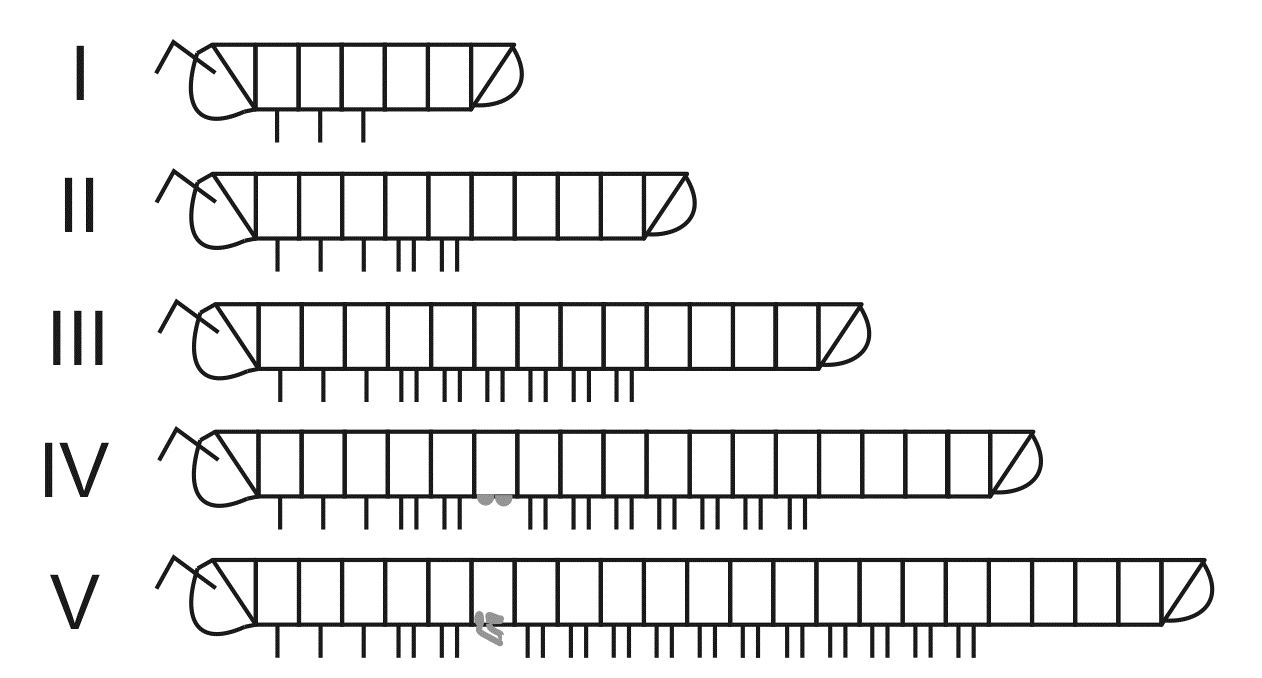|
Haplodesmidae
Haplodesmidae is a family of millipedes in the order Polydesmida. Species occur in East Asia, Southeast Asia, and Oceania, although some species have been introduced to the New world tropics. Species are small bodied (generally less than 10 mm), often with elaborate sculpturing on the tergites (dorsal portion of exoskeleton), and some species are capable of rolling into a near-complete ball. pp. 430-433 This family includes some species that feature unusual deviations from the 20 segments (including the telson) normally observed in the order Polydesmida. For example, some species exhibit sexual dimorphism Sexual dimorphism is the condition where the sexes of the same animal and/or plant species exhibit different morphological characteristics, particularly characteristics not directly involved in reproduction. The condition occurs in most ani ... in segments number, including not only ''Prosopodesmus panporus'' and '' Eutrichodesmus peculiaris'' (adult females wit ... [...More Info...] [...Related Items...] OR: [Wikipedia] [Google] [Baidu] |
Eutrichodesmus
''Eutrichodesmus'' is a genus of millipedes in the family Haplodesmidae Haplodesmidae is a family of millipedes in the order Polydesmida. Species occur in East Asia, Southeast Asia, and Oceania, although some species have been introduced to the New world tropics. Species are small bodied (generally less than 10&nb ..., containing at least 32 species in China, Taiwan, and Southeast Asia. One of these species (''Eutrichodesmus peculiaris'') exhibits sexual dimorphism in segments number: The adult females have 20 segments (including the telson), but the adult males have only 19. Species * '' Eutrichodesmus arcicollaris'' Zhang, 1993 * '' Eutrichodesmus armatocaudatus'' Golovatch, Geoffroy, Mauriès & VandenSpiegel, 2009 * '' Eutrichodesmus aster'' Golovatch, Geoffroy, Mauriès & VandenSpiegel, 2009 * '' Eutrichodesmus asteroides'' Golovatch, Geoffroy, Mauriès & VandenSpiegel, 2009 * '' Eutrichodesmus basalis'' Golovatch, Geoffroy, Mauriès & VandenSpiegel, 2009 ... [...More Info...] [...Related Items...] OR: [Wikipedia] [Google] [Baidu] |
Polydesmida
Polydesmida (from the Greek language, Greek ''poly'' "many" and ''desmos'' "bond") is the largest order (biology), order of millipedes, containing approximately 3,500 species, including all the millipedes reported to produce hydrogen cyanide (HCN). Description Members of the order Polydesmida are also known as "flat-backed millipedes", because on most species, each body segment has wide lateral keels known as paranota. These keels are produced by the posterior half (metazonite) of each body ring behind the collum (millipedes), collum. Polydesmids have no eyes, and vary in length from . Many of the larger species show bright coloration patterns which warn predators of their toxic secretions. Adults usually have 20 segments, counting the collum as the first ring and the telson as the last ring. juvenile (organism), Juveniles have from 7 to 19 rings. In species with the usual 20 segments, adult females have 31 pairs of legs, but in adult males, the eighth leg pair (the first leg pai ... [...More Info...] [...Related Items...] OR: [Wikipedia] [Google] [Baidu] |
Sexual Dimorphism
Sexual dimorphism is the condition where the sexes of the same animal and/or plant species exhibit different morphological characteristics, particularly characteristics not directly involved in reproduction. The condition occurs in most animals and some plants. Differences may include secondary sex characteristics, size, weight, colour, markings, or behavioural or cognitive traits. These differences may be subtle or exaggerated and may be subjected to sexual selection and natural selection. The opposite of dimorphism is ''monomorphism'', which is when both biological sexes are phenotypically indistinguishable from each other. Overview Ornamentation and coloration Common and easily identified types of dimorphism consist of ornamentation and coloration, though not always apparent. A difference in coloration of sexes within a given species is called sexual dichromatism, which is commonly seen in many species of birds and reptiles. Sexual selection leads to the exaggerated dim ... [...More Info...] [...Related Items...] OR: [Wikipedia] [Google] [Baidu] |
Millipedes Of Asia
Millipedes are a group of arthropods that are characterised by having two pairs of jointed legs on most body segments; they are known scientifically as the class Diplopoda, the name derived from this feature. Each double-legged segment is a result of two single segments fused together. Most millipedes have very elongated cylindrical or flattened bodies with more than 20 segments, while pill millipedes are shorter and can roll into a tight ball. Although the name "millipede" derives from the Latin for "thousand feet", no species was known to have 1,000 or more until the discovery of ''Eumillipes persephone'', which can have over 1,300 legs. There are approximately 12,000 named species classified into 16 orders and around 140 families, making Diplopoda the largest class of myriapods, an arthropod group which also includes centipedes and other multi-legged creatures. Most millipedes are slow-moving detritivores, eating decaying leaves and other dead plant matter. Some eat fungi or ... [...More Info...] [...Related Items...] OR: [Wikipedia] [Google] [Baidu] |
Anamorphosis (biology)
Anamorphosis or Anamorphogenesis refers to postembryonic development and moulting in Arthropoda that results in the addition of abdominal body segments, even after sexual maturity. An example of this occurs in proturans and millipede Millipedes are a group of arthropods that are characterised by having two pairs of jointed legs on most body segments; they are known scientifically as the class Diplopoda, the name derived from this feature. Each double-legged segment is a resu ...s. Protura hatch with only 8 abdominal segments and add the remaining 3 in subsequent moults. These new segments arise behind the last abdominal segment, but in front of the telson. In myriapods, euanamorphosis is when the addition of new segments continues during each moult, without there being a fixed number of segments for the adult, teloanamorphosis is when the moulting ceases once the adult has reached a fixed number of segments, and hemianamorphosis is when a fixed number of segments is reached, ... [...More Info...] [...Related Items...] OR: [Wikipedia] [Google] [Baidu] |
.jpg)


